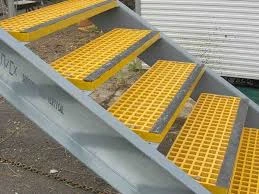
-
 Afrikaans
Afrikaans -
 Albanian
Albanian -
 Amharic
Amharic -
 Arabic
Arabic -
 Armenian
Armenian -
 Azerbaijani
Azerbaijani -
 Basque
Basque -
 Belarusian
Belarusian -
 Bengali
Bengali -
 Bosnian
Bosnian -
 Bulgarian
Bulgarian -
 Catalan
Catalan -
 Cebuano
Cebuano -
 China
China -
 China (Taiwan)
China (Taiwan) -
 Corsican
Corsican -
 Croatian
Croatian -
 Czech
Czech -
 Danish
Danish -
 Dutch
Dutch -
 English
English -
 Esperanto
Esperanto -
 Estonian
Estonian -
 Finnish
Finnish -
 French
French -
 Frisian
Frisian -
 Galician
Galician -
 Georgian
Georgian -
 German
German -
 Greek
Greek -
 Gujarati
Gujarati -
 Haitian Creole
Haitian Creole -
 hausa
hausa -
 hawaiian
hawaiian -
 Hebrew
Hebrew -
 Hindi
Hindi -
 Miao
Miao -
 Hungarian
Hungarian -
 Icelandic
Icelandic -
 igbo
igbo -
 Indonesian
Indonesian -
 irish
irish -
 Italian
Italian -
 Japanese
Japanese -
 Javanese
Javanese -
 Kannada
Kannada -
 kazakh
kazakh -
 Khmer
Khmer -
 Rwandese
Rwandese -
 Korean
Korean -
 Kurdish
Kurdish -
 Kyrgyz
Kyrgyz -
 Lao
Lao -
 Latin
Latin -
 Latvian
Latvian -
 Lithuanian
Lithuanian -
 Luxembourgish
Luxembourgish -
 Macedonian
Macedonian -
 Malgashi
Malgashi -
 Malay
Malay -
 Malayalam
Malayalam -
 Maltese
Maltese -
 Maori
Maori -
 Marathi
Marathi -
 Mongolian
Mongolian -
 Myanmar
Myanmar -
 Nepali
Nepali -
 Norwegian
Norwegian -
 Norwegian
Norwegian -
 Occitan
Occitan -
 Pashto
Pashto -
 Persian
Persian -
 Polish
Polish -
 Portuguese
Portuguese -
 Punjabi
Punjabi -
 Romanian
Romanian -
 Russian
Russian -
 Samoan
Samoan -
 Scottish Gaelic
Scottish Gaelic -
 Serbian
Serbian -
 Sesotho
Sesotho -
 Shona
Shona -
 Sindhi
Sindhi -
 Sinhala
Sinhala -
 Slovak
Slovak -
 Slovenian
Slovenian -
 Somali
Somali -
 Spanish
Spanish -
 Sundanese
Sundanese -
 Swahili
Swahili -
 Swedish
Swedish -
 Tagalog
Tagalog -
 Tajik
Tajik -
 Tamil
Tamil -
 Tatar
Tatar -
 Telugu
Telugu -
 Thai
Thai -
 Turkish
Turkish -
 Turkmen
Turkmen -
 Ukrainian
Ukrainian -
 Urdu
Urdu -
 Uighur
Uighur -
 Uzbek
Uzbek -
 Vietnamese
Vietnamese -
 Welsh
Welsh -
 Bantu
Bantu -
 Yiddish
Yiddish -
 Yoruba
Yoruba -
 Zulu
Zulu
fiberglass grating
Understanding Fiberglass Grating A Comprehensive Overview
Fiberglass grating is an innovative and versatile material that has gained popularity in a range of industrial applications due to its strength, durability, and resistance to environmental factors. This composite material, primarily made from resin and fiberglass reinforcement, offers an alternative to traditional materials such as steel or wood, finding extensive use in various sectors, including marine, chemical processing, and construction.
What is Fiberglass Grating?
Fiberglass grating is a manufactured flooring system consisting of a series of fiberglass-reinforced plastic (FRP) panels. These panels are created through a molding process that combines glass fibers with a thermosetting resin to produce a strong and lightweight material. The result is a product that is not only structurally sound but also resistant to corrosion, chemicals, and extreme weather conditions. The non-slip surface of fiberglass grating makes it especially valuable in environments where safety is a concern.
Key Advantages of Fiberglass Grating
1. Corrosion Resistance One of the primary benefits of fiberglass grating is its inherent resistance to corrosion. Unlike metal grating, which can oxidize and deteriorate when exposed to chemicals or seawater, fiberglass does not rust or corrode. This quality makes it ideal for use in chemical plants, wastewater treatment facilities, and other harsh environments.
2. Lightweight Yet Strong Fiberglass grating is significantly lighter than steel alternatives, making it easier to handle and install. The lightweight nature does not compromise its load-bearing capabilities; it can support various weights and is suitable for heavy-duty applications.
fiberglass grating

3. Safety Features The surface of fiberglass grating can be manufactured with anti-slip features that enhance safety in industrial settings. This is particularly crucial in areas prone to spills or wet conditions, reducing the risk of slips and falls.
4. Easy Installation The lightweight design of fiberglass grating provides for easy installation, which can save time and labor costs. It can be cut to size on-site, allowing for customization to fit specific needs.
5. Low Maintenance Fiberglass grating requires minimal maintenance compared to traditional materials. It does not need to be painted, treated, or replaced as frequently, which results in reduced long-term costs.
Applications of Fiberglass Grating
Due to its numerous benefits, fiberglass grating is utilized across various sectors. In the marine industry, it is used for walkways, docks, and platforms because of its resistance to saltwater and UV light. In industrial settings, it is often employed for catwalks, platforms, and safety barriers. Additionally, its lightweight nature makes it a popular choice for temporary structures and scaffolding.
Conclusion
In summary, fiberglass grating represents a significant advancement in flooring solutions, offering a range of benefits that cater to various industries. Its exceptional strength, corrosion resistance, and safety features make it an intelligent choice for environments that demand durability and reliability. As technology continues to evolve, the applications and forms of fiberglass grating are likely to expand further, reinforcing its position as a preferred option in modern construction and industrial processes. Whether for new projects or upgrades to existing structures, investing in fiberglass grating is an excellent way to ensure a safe, efficient, and long-lasting solution.









